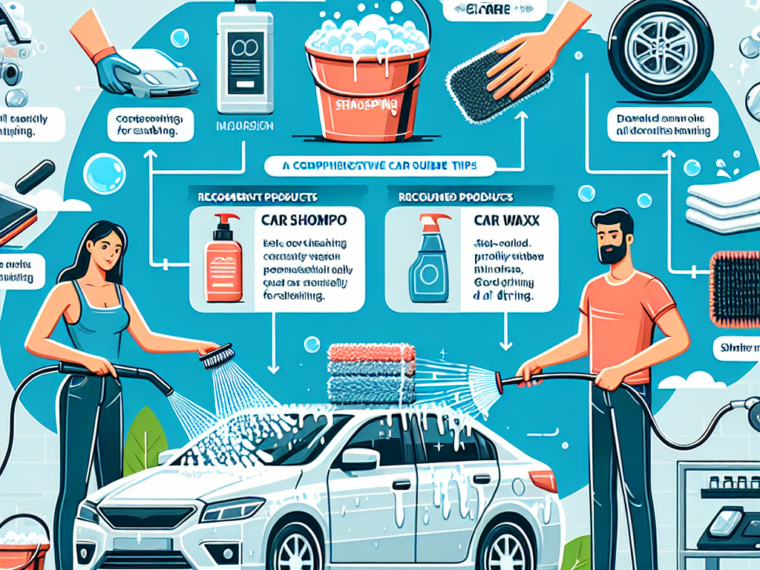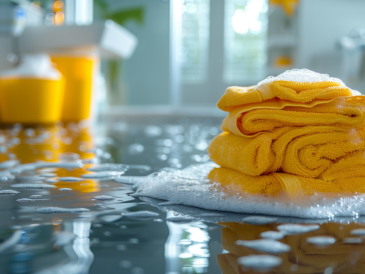Introduction
Embarking on a journey to understand the intricacies of car washing, we delve into the process of keeping your vehicle sparkling clean. This comprehensive guide aims to equip you with the knowledge and techniques to maintain the cleanliness of your vehicle, enhancing not just its aesthetic appeal but also its longevity.
The Significance of Routine Car Cleaning
Keeping your car clean goes beyond mere aesthetics. Regular car washing plays a crucial role in maintaining the overall health of your vehicle. It helps prevent the accumulation of dust, grime, and harmful chemicals that could damage your car’s exterior and interior over time. Furthermore, a clean car offers a more enjoyable driving experience, boosting your comfort and satisfaction.
Exploring Various Car Washing Techniques
In the realm of car washing, there exist a plethora of techniques designed to tackle different types of dirt and stains. From hand washing to using specialized cleaning tools, each method has its unique benefits and drawbacks. This guide will provide a detailed overview of these techniques, enabling you to choose the most suitable approach for your car’s specific needs.
Understanding Your Car’s Exterior
The Complete Manual on Car Cleaning
Mastering the art of car cleaning involves a deep understanding of your vehicle’s exterior, the different types of car paints and finishes, as well as the areas that are most susceptible to dirt and damage. This comprehensive guide aims to equip you with all the necessary knowledge for a thorough car wash.
Understanding the Outer Shell of Your Vehicle
It’s crucial to familiarize yourself with the exterior of your car, as this knowledge will guide you in choosing the right cleaning materials and methods. The exterior comprises several parts, each made from different materials, such as metal, plastic, and glass. These materials require different cleaning approaches to maintain their quality and shine.
Exploring Various Car Paints and Finishes
The type of paint and finish on your car plays a significant role in how you should clean it. There are various types of car paints, including acrylic, metallic, and urethane, and finishes such as matte, gloss, and satin. Each type has its unique characteristics and cleaning requirements. For instance, matte finishes should not be polished as it can ruin their flat look, while gloss finishes can benefit from occasional polishing to enhance their shine.
Spotting Dirt and Damage Hotspots
Some areas on your car are more prone to dirt accumulation and damage than others. These areas include the wheels and wheel wells, the front grille, and the lower parts of the car that are closer to the road. Regularly checking these areas and cleaning them can prevent long-term damage and keep your car looking its best.
Pre-Wash Preparations
A Thorough Manual on Car Cleaning
This manual will provide a comprehensive guide on how to effectively clean your car, ensuring it remains in optimal condition.
Pre-Cleaning Arrangements
Before you start the car cleaning process, it is crucial to make certain arrangements. These pre-cleaning arrangements involve collecting all the necessary tools and cleaning supplies that you will need for the task. This step is crucial as it ensures you have everything you need at hand, thus making the cleaning process smoother and more efficient.
Gathering Essential Equipment and Cleaning Materials
For a successful car wash, you need to gather all the necessary tools and cleaning supplies. These may include items such as a bucket, sponge, car wash soap, glass cleaner, microfiber towels, and a vacuum cleaner. Having the right tools and cleaning supplies not only makes the task easier but also helps to protect your car’s paint and finish from damage that could be caused by improper cleaning materials.
Assessing the Car Prior to Cleaning
Before you begin the washing process, it is important to thoroughly inspect your car. Look for any noticeable dirt, stains, or areas that may require special attention during the cleaning process. This step will help you focus your cleaning efforts on areas that need it the most, thus ensuring that your car is thoroughly cleaned.
Car Washing Techniques
Hand Washing Method
Hand washing your car is a traditional and effective method that many car owners still prefer today. It allows for a detailed and personalized touch to your vehicle’s cleaning process.
Steps for Effective Hand Washing
Start by rinsing your car to remove any loose dirt. Then, using a car wash mitt and a bucket of soapy water, start washing from the top and work your way down. Rinse the car and dry it using a microfiber towel for the best results.
Tips for Hand Washing
Always use a car-specific soap as household detergents can strip the wax off your car. Additionally, use a separate bucket for rinse water to avoid putting dirt back onto your car.
Pressure Washing Method
Pressure washing is a quick and efficient method to clean your car. It’s particularly effective for removing stubborn dirt, mud, and other debris.
Steps for Effective Pressure Washing
Before you start pressure washing, pre-rinse your car to remove any loose dirt. Then, use the pressure washer to clean from the bottom up, and rinse from the top down. Be careful not to hold the pressure washer too close to the car as it could damage the paint.
Tips for Pressure Washing
Use a pressure washer with a wide-angled tip to avoid damaging your car’s paint. Also, it’s recommended to use a car wash soap specifically designed for pressure washers.
Automated Car Wash Method
The automated car wash method is a convenient and time-saving option. It’s a good choice for those who want a quick clean and aren’t concerned about detailed cleaning.
Steps for Using Automated Car Wash
Simply drive your car into the car wash, select your wash package, and let the machine do the rest. Ensure all windows and doors are securely closed before entering the car wash.
Pros and Cons of Automated Car Wash
Automated car washes are quick and require less effort. However, they may not clean as thoroughly as hand or pressure washing. Additionally, some automated car washes can potentially scratch your car’s paint due to the hard brushes used.
Detailed Car Cleaning
The Comprehensive Manual for Vehicle Maintenance
Keeping your vehicle in top shape involves more than just regular oil changes and tune-ups. It also includes thorough cleaning to maintain its appearance and value. This comprehensive guide will provide detailed instructions on how to effectively clean your car.
Detailed Automobile Sanitation
To ensure a thorough clean, it’s essential to focus on every part of your vehicle, both inside and out. This means dusting and vacuuming the interior, washing the exterior, and not forgetting about the often-overlooked areas like the underbody and the wheels.
Cleaning the Tires and Rims
Wheels and tires can accumulate a lot of dirt and grime from the road. Cleaning them not only enhances your car’s aesthetic but also prolongs their lifespan. It’s important to use a specially designed brush and a cleaning solution that can effectively remove brake dust and road grime.
Maintaining the Clarity of Windows and Mirrors
Windows and mirrors are crucial for safe driving, and keeping them clean should be a top priority. Special automotive glass cleaners are recommended to remove dirt and smudges without leaving streaks. Always use a microfiber cloth to avoid scratching the glass surfaces.
Sanitizing the Car’s Underbody
The underbody of your car is exposed to a lot of dirt, salt, and other road debris. Regular cleaning can help prevent rust and corrosion. Many car washes offer underbody cleaning services, but you can also do it yourself using a pressure washer.
Drying and Post-Wash Care
The Ultimate Handbook on Car Washing
This handbook provides an all-inclusive guide to car washing, offering a step-by-step process to ensure your vehicle is spotless and well-maintained. It covers everything from the drying process to post-wash care, including applying protective measures and regular maintenance tips.
Drying and After-Wash Care
After washing your car, it’s crucial to properly dry it to prevent water spots and streaks. This section of the guide will provide you with the correct techniques for drying your car, ensuring a flawless finish.
Effective Methods for Drying Your Vehicle
Proper drying techniques are essential to avoid any watermarks or streaks on your car. This section will guide you on how to dry your car effectively, ensuring a shiny and spotless appearance.
Applying Protective Measures
Once your car is clean and dry, it’s important to apply a layer of wax or sealant for protection. This section will guide you on how to correctly apply these protective measures, ensuring your car’s paintwork is shielded from the elements.
Using Wax or Sealant for Protection
Applying a layer of wax or sealant can protect your car’s paintwork from damage and keep it looking fresh and glossy. This section will guide you on how to properly apply these protective measures, helping to prolong the life of your car’s paintwork.
Regular Maintenance After Washing
Regular maintenance after washing is crucial to keep your car in top condition. This section will provide you with tips and advice on how to maintain your car after washing, ensuring it stays clean and well-maintained for longer.
Common Car Washing Mistakes and How to Avoid Them
The Ultimate Handbook for Car Cleaning
Proper car cleaning involves more than just a bucket and sponge. It’s a comprehensive process that requires the right tools, techniques, and attention to detail. This guide will help you understand the common mistakes made during car washing and how to avoid them for a flawless finish.
Choosing the Right Tools and Products
One of the most common mistakes car owners make is using the wrong tools and products. Not all cleaning materials are suitable for all car surfaces. It’s essential to choose the right products that won’t damage your car’s paint or interior. For example, using a harsh detergent instead of a car-specific soap can strip away the protective wax coating on your car, leaving it vulnerable to scratches and sun damage.
Proper Washing and Drying Techniques
Another mistake to avoid is improper washing and drying techniques. Washing your car isn’t as simple as hosing it down. It’s important to wash from top to bottom, not in a circular motion, to prevent dirt and grime from scratching the paint. Similarly, drying your car is just as important as washing it. Leaving your car to air-dry can cause water spots and streaks. Instead, use a microfiber towel or a car dryer to gently dry your car.
Paying Attention to All Areas of the Car
Finally, don’t ignore certain areas of your car. It’s easy to overlook areas like the undercarriage, wheel wells, and door jambs, but these are just as important to clean as the rest of your car. Dirt and salt can accumulate in these areas and cause corrosion over time. Make sure to give these areas a good scrub during your next car wash.
Comprehensive Guide to Car Washing
What is the proper way to wash your car?
The proper way to wash your car involves several STEPS. First, gather your car washing supplies including a Car Wash Soap, a Wheel brush, a sponge, and a Chamois towel for drying. Make sure you park your car in a shade to avoid quick drying which can lead to water spotting. Wet the car before washing to remove loose dirt. Then, apply the car wash soap using a sponge or mitt, working in sections from top to bottom. Rinse off the soap, then dry using a Chamois towel to prevent streaking. Lastly, apply a coat of wax for added shine and protection.
What is the correct order to wash your car?
The correct order for car washing starts with preparing your tools and area. Start by cleaning the tires and wheel wells using a wheel brush to remove brake dust and dirt. Then, wash the car body, starting from the top and working your way down to avoid dragging dirt and grit across the paint. After rinsing, dry the car using a towel to prevent water spots. The final step is applying a wax coating to protect the car finish and boost its gloss.
What kind of soap do you use to wash a car?
When it comes to washing a car, the type of soap matters. It’s recommended to use a car wash soap, which is specifically designed to be gentle on your car’s paint and clear coat finish. Avoid using household soaps or laundry detergent as they can strip the wax protection and cause damage to the paint job. Car wash soaps are available at auto supply stores and come in different types depending on your car’s needs.
How do I wash my car like a pro?
Washing your car like a pro involves more than just the basic actions of soap and water. It requires attention to details like using the right volume of water, the correct soap-water ratio, and proper cleaning motions. Also, consider the temperature and avoid washing in direct sunlight to prevent water spots and streaking. Using quality products like car wash soaps and wax can also make a significant impact on the end result. Lastly, don’t forget to clean the tires and apply tire shine for that professional finish.
How often should I wash my car?
The frequency of car washing depends on many factors such as the environment, your mode of transportation, and how often you drive. As a general rule, it’s recommended to wash your car every two weeks. However, if your car is exposed to elements like bird droppings, tar, or oil, you might need to wash it more frequently. Regular car maintenance can enhance your car’s resale value and keep it looking its best.
How do you wash a car for beginners?
For beginners, car washing might seem like a daunting task, but with the right guide and tools, it can be a straightforward process. Start by gathering your car wash supplies. Use a car wash soap and not dish soap or other household soaps.
Wet the car first to loosen dirt, then apply the soap using a sponge or mitt. Rinse the soap off, then dry the car using a towel. Remember to work in sections to ensure all areas are cleaned and dried properly.
Should you wet car before washing?
Yes, you should wet your car before washing. This action helps to loosen and remove dirt and grime from the surface of the car, making the washing process more effective. It’s best to use a hose for this step, ensuring a thorough wetting of the car’s surface.
Is car washing easy?
Car washing can be easy with the right tools and steps. The process can be simplified into four main sections: pre-wash, wash, rinse, and dry. With a little practice and the right car cleaning products, anyone can master the art of car washing.
Is it better to go to a car wash or do it yourself?
The decision to go to a car wash or do it yourself depends on factors like cost, time, and the level of cleanliness desired. Car washes can save time and effort, but washing your car at home allows for attention to detail, especially for car enthusiasts who take great pride in their cars. Additionally, washing your car at home can be a cost-effective option.
What is the 2 bucket method of washing a car?
The 2 bucket method is a car washing technique that aims to minimize the chance of scratching the car’s surface. One bucket is filled with soapy water and the other with clean water. The idea is to rinse the mitt or sponge in the clean water bucket before dipping it back into the soapy water. This helps to remove dirt and grit from the mitt, reducing the risk of scratching the car’s paint.




